Celebrate Spring With These Inspired Floral Tips From Gjusta Flower Shop
Translation missing: en.blogs.article.author_on_date_html
Entertaining
Celebrate Spring With These Inspired Floral Tips From Gjusta Flower Shop
April 13, 2022
If you’ve had the privilege of frequenting either of the Gjelina Group’s Los Angeles dining destinations, you understand the magic of a curated energy and careful seasonality that’s tangible in every bite—an artistry the restaurateurs are manifesting into an entirely new venture. Tucked away in an unassuming Venice alleyway, Gjusta Flower Shop brings the same charm and intent to bespoke botanicals. We recently met with Sydney Gilbert, the Consultant/Director of Gjusta Goods, for a lesson in florals and coastal forms—and we left with a comprehensive guide to at-home arrangements to inspire us all season long. Read on for more, and be sure to bookmark for later.
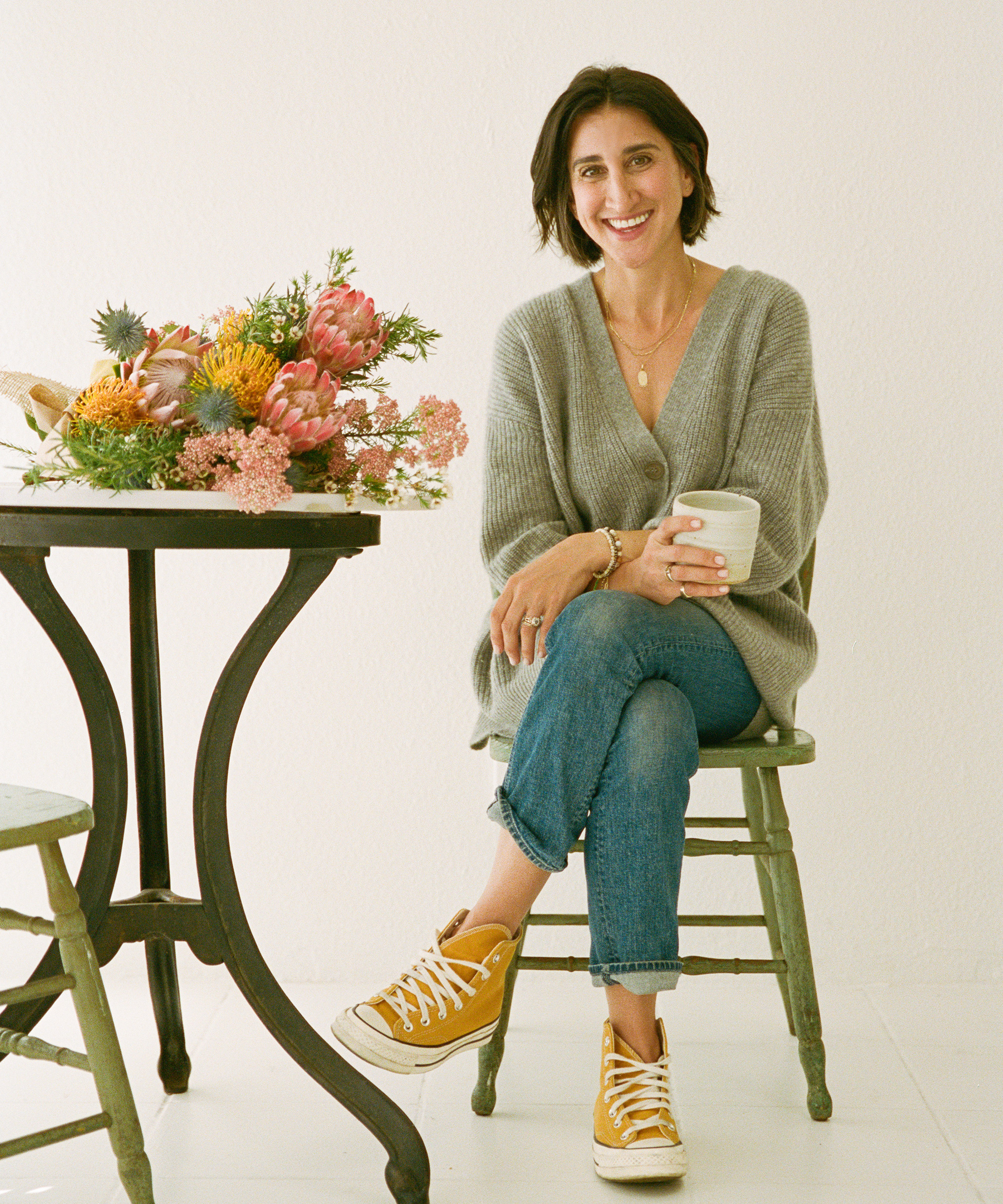
Celebrate Spring With These Inspired Floral Tips From Gjusta Flower Shop
Rip & Tan: It’s safe to say Gjelina and Gjusta have solidified themselves as must-eat destinations. What inspired this new venture? What can fans of your food expect from Gjusta Flower Shop?
Sydney Gilbert: The Gjusta Flower Shop concept always existed in Gjelina Group CEO, Shelley Kleyn Armistead’s head. Flowers were such an impact in her life—ironically more than food. Her family has played the biggest role in her love of flowers. From weekly hikes in the Helderberg Mountains in South Africa at a young age, she learned the names of flowers while understanding the practice of observation vs picking them. She was inspired by her father (her primary teacher) who to this day teaches on edible plants, medicinal plants, and wildflowers.
While her past experience is rooted in hospitality, Shelley has been with the Gjelina Group since January 2014, starting as the COO and CEO since 2021. She has since grown the group in many capacities: Gjusta Flower Shop in January, as the first new venture of 2022.
We tackled a beat-up alley to create a hidden gem off the bustling streets of Venice for an unexpected moment with thoughtful blooms, vintage vessels, and ceramics. Not only are our blooms carefully sourced each week with quality farmers and vendors, but we ensure our flowers have never been sprayed or treated in such a way that might cause you harm. Just as you would consider when buying food, we treat our flower purchasing the same way.
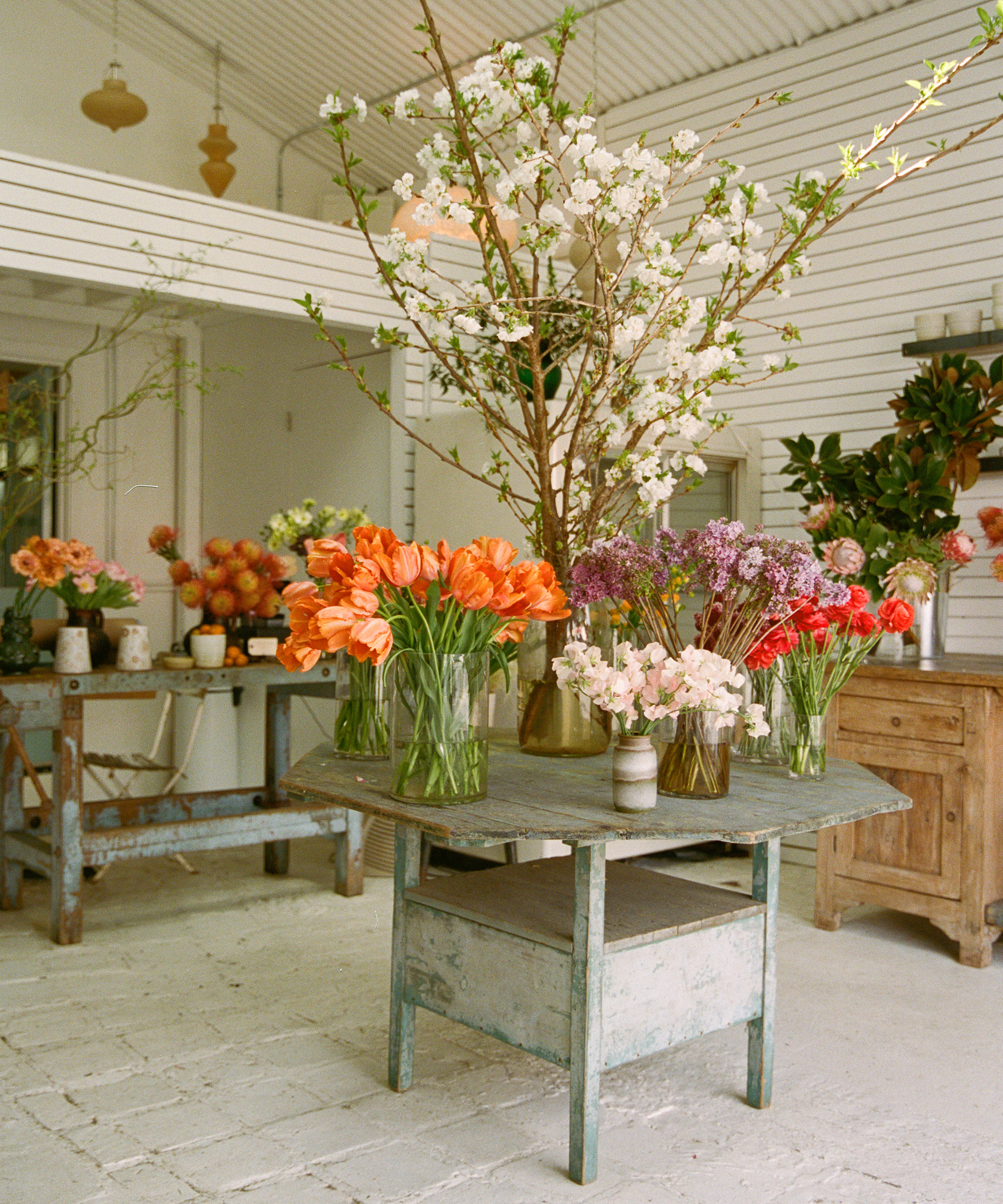

Rip & Tan: You source your stems seasonally, direct from the surrounding farms in Southern California. How has this relationship with local farmers guided the ethos of your artistry?
Sydney Gilbert: We do our best to minimize our environmental impact by curating a selection of mostly local seasonally reflective flowers. We have incredible relationships with farmers, so much so that we have used many of the same produce vendors since Gjelina opened in 2008. Growers such as Peads & Barnetts, Coleman Family Farms, and Windrose Farm, who produce food as well as flowers. Using a selection of mostly local, seasonal flowers minimizes our environmental impact. At the Flower Shop, we extend these relationships and values to all things that bloom.
It is also (personally) my favorite feeling during the week when we get a farm drop: we take what we get from the farm and then create. Be it lilacs or ranunculus, the stems are freshly cut and the shop is rooted with a story.
Rip & Tan: What are your favorite florals from each season?
Sydney Gilbert: This is hard, especially because so much thrives in Southern California. We are spoiled by how many blooms we are constantly surrounded by regardless of the season.
I love Helboire because I grew it myself. I love Wisteria and Passion Fruit because it grows beautifully at Gjusta and marks springtime at the property. During winter, branches are the unsung hero. They can be used almost anywhere. They look so elegant in a ceramic vessel in the cooler months—they just work. If I’m looking for some color or blossoms, a few Magnolia branches with some blossoms on them can be perfection.
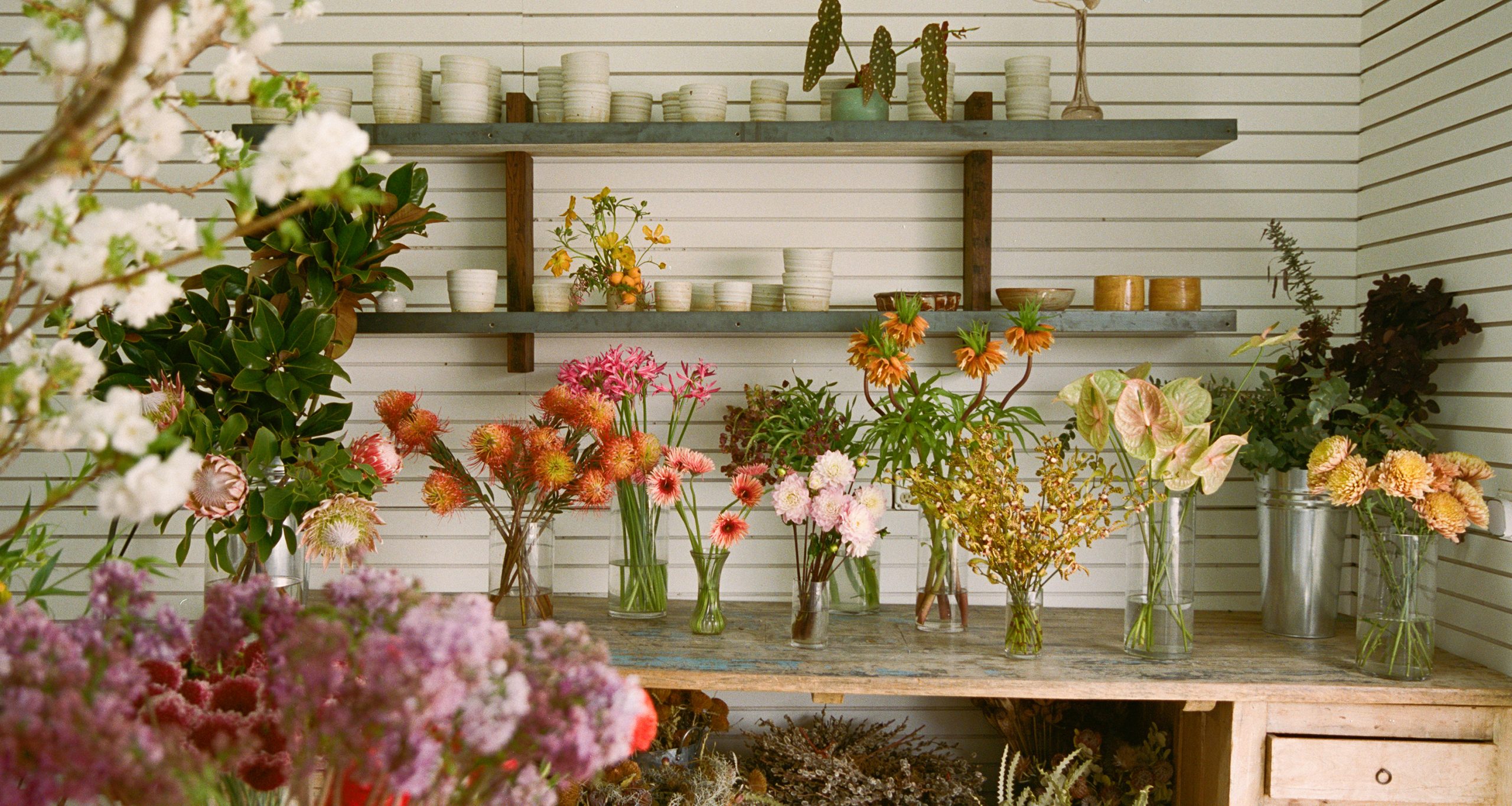
Rip & Tan: When in doubt, what are three plants or flowers that will never fail to make a beautiful spring arrangement?
Sydney Gilbert: Anthuriums (for a funky, vintage, unassuming inclusion—it’s impressive), Sweet Peas (can be a filler or function as a moment when coupled together-delicate but unique in shape), and Protea (hearty, takes up a lot of space. and the colors work well with a lot of assorted blooms).
These are all great, not necessarily together—but they are all in a heavy rotation for spring at Gjusta Flower Shop.
Rip & Tan: For aspiring at-home florists, what ought to be on our checklist of essential supplies?
Sydney Gilbert: Sharp floral snips, a water source, a lazy susan for arrangements, and chicken wire (specifically green floral netting). We love using wire as a structural base to support your flower arrangement. Chicken wire really helps root the flowers in dynamic positions and is a sturdy base for developing any arrangement while keeping your mechanics hidden. Lastly, a lazy susan helps you see all angles of your creation to avoid creating a one-sided arrangement.
We are a foam-free shop. Floral foam is made from synthetic, non-recyclable plastic and is created using a combination of carbon black, formaldehyde, and phenolic foam, which are all toxic. Florists have traditionally used foam in arrangements to provide water and configure stems in vases.

Rip & Tan: Can you walk us through the process of creating this bouquet—from brainstorming to making it last?
Sydney Gilbert: Making an arrangement or bouquet always starts with a recipe ((complimentary flowers you are putting in your bouquet). You will then need to process, which ensures all the leaves and thorns are pulled off each stem—where they are not needed. Each leaf requires water so the more leaves that come off, the faster your flowers will drink water, keeping them fresher longer. Once you have all your flowers prepped, you decide what you want as your container along with your flower recipe.
When building, it’s best to start with a base, be it branches, greens, and so forth. This helps create a foundation so your blooms don’t get swallowed. It also makes your bouquet full and is a great way to occupy empty space.
Keep your stems as long as possible—this will be helpful as you are pulling them higher and lower to create depth and height making it a more dynamic bouquet
Try keeping your bouquet with an odd number of blooms—often arrangements or bouquets that look “ too even” feel less organic and not natural. Nature doesn’t grow evenly, neither should your creation.
Don’t be too precious about it! Take it apart, put it back together. Look at the bouquet in the mirror or from a different angle. It’s ok to remove stems and reposition them as you go.
All while holding the stems in your non-dominant hand, find a sturdy ribbon to wrap and tighten. Cut all stems at the same length (once tied) and place in clean water—change your water as often as every 3 days.
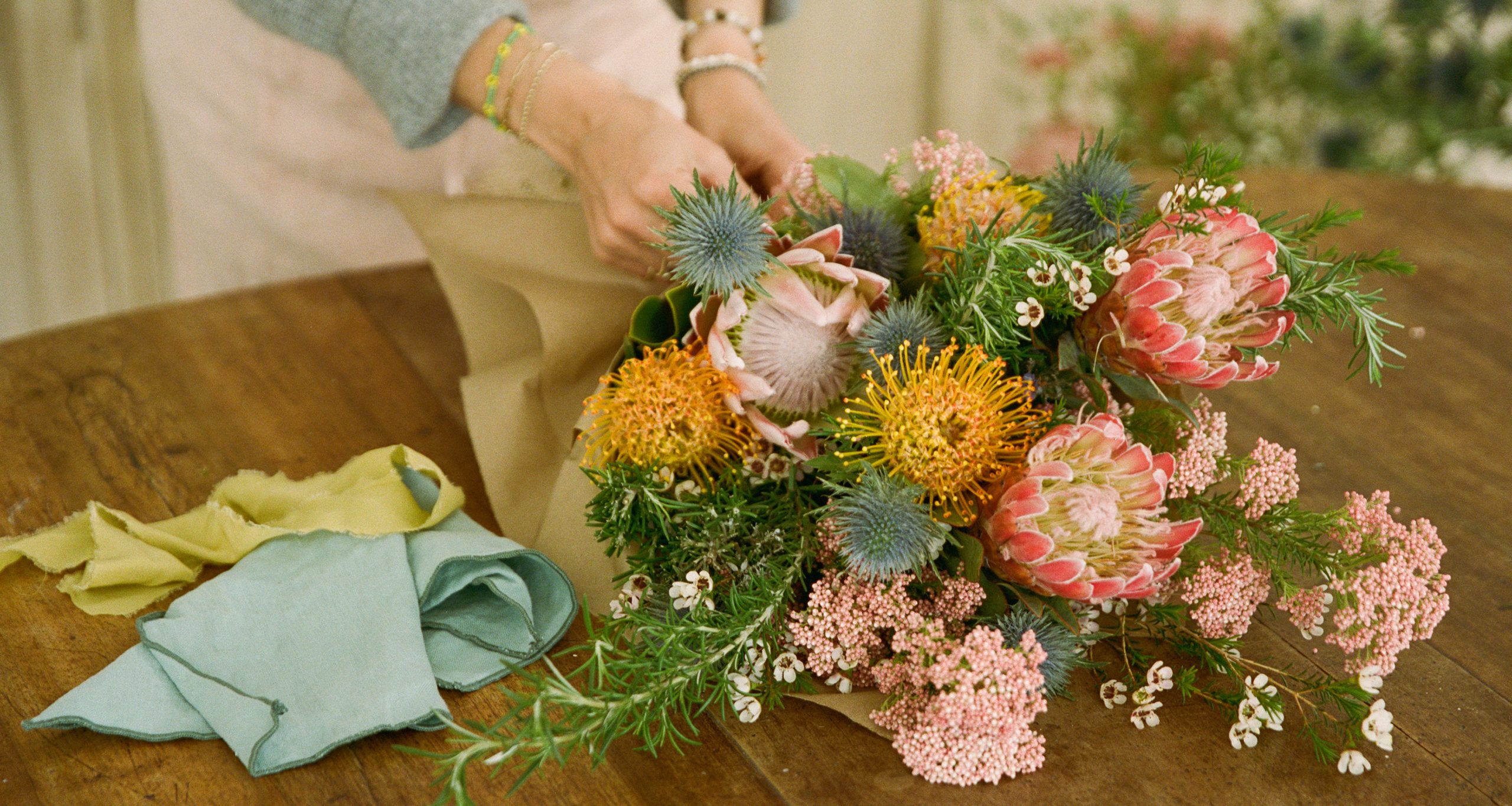
Rip & Tan: Are there any florals you tend to avoid? Any that are overused?
Sydney Gilbert: Dried flowers. While we understand the appeal because of their durability and longevity, for us, the fun of flowers is seeing how they bloom and the creation of pulling together colorful recipes that can coexist with unexpected flowers. Texture, colors, and story all play a role in making a successful arrangement. I love when we educate customers on flowers, how they bloom in their natural state, and how unique our selection is. Like an artichoke! You can’t see the magic in dried flowers the way you can in a bloomed artichoke.
Rip & Tan: What’s a common mistake you see florists, at-home or otherwise, make? How can we remedy it?
Sydney Gilbert: It’s interesting to watch each florist have their own approach and style. Just like cooking, everyone has their own way to design their intentional recipe. I personally have learned less is more. When you’re designing, one’s instinct is to add more flowers to make it more “grand.” You can add more of what you have in your existing recipe arrangement, not necessarily add more flowers. This helps it feel more sculptural rather than perfectly symmetrical. Also—please, please, shop local. Go to the Flower Mart Downtown in LA, it’s magical.
Rip & Tan: What takes an arrangement from simple bouquet to work of art? How can we add an element of the unexpected?
Sydney Gilbert: I love that a lot of Gjusta Flower Shop’s arrangements use air and space as an element to play with. This means there is literal space between the stems and it becomes more appealing to look at since the stems are not sitting on the same axis. You see air and space creating the arrangement to meet at various points.
Using branches or pops of alliums or a show stopper anthurium (maybe even just one) creates moments for a very easy wow factor.
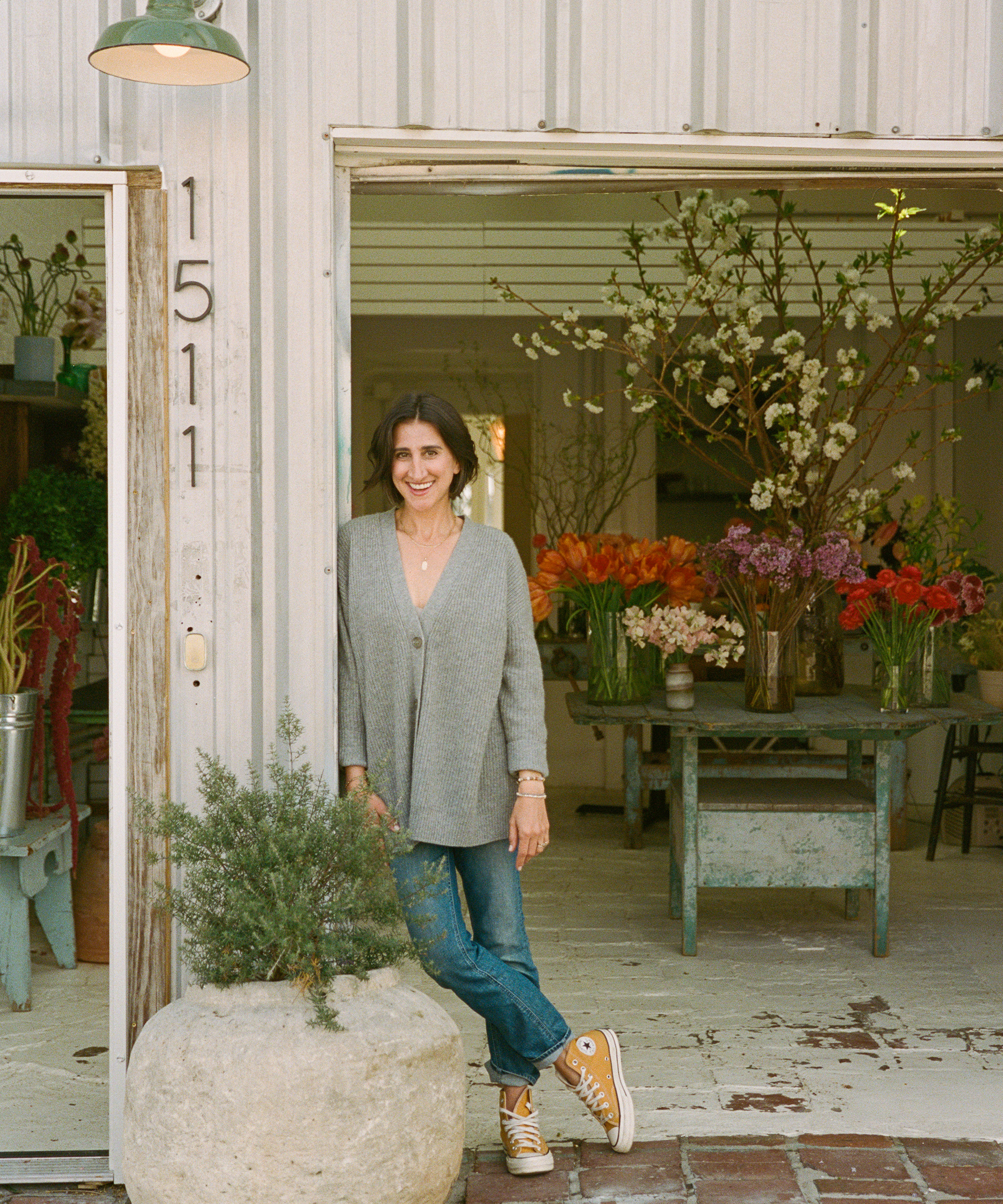
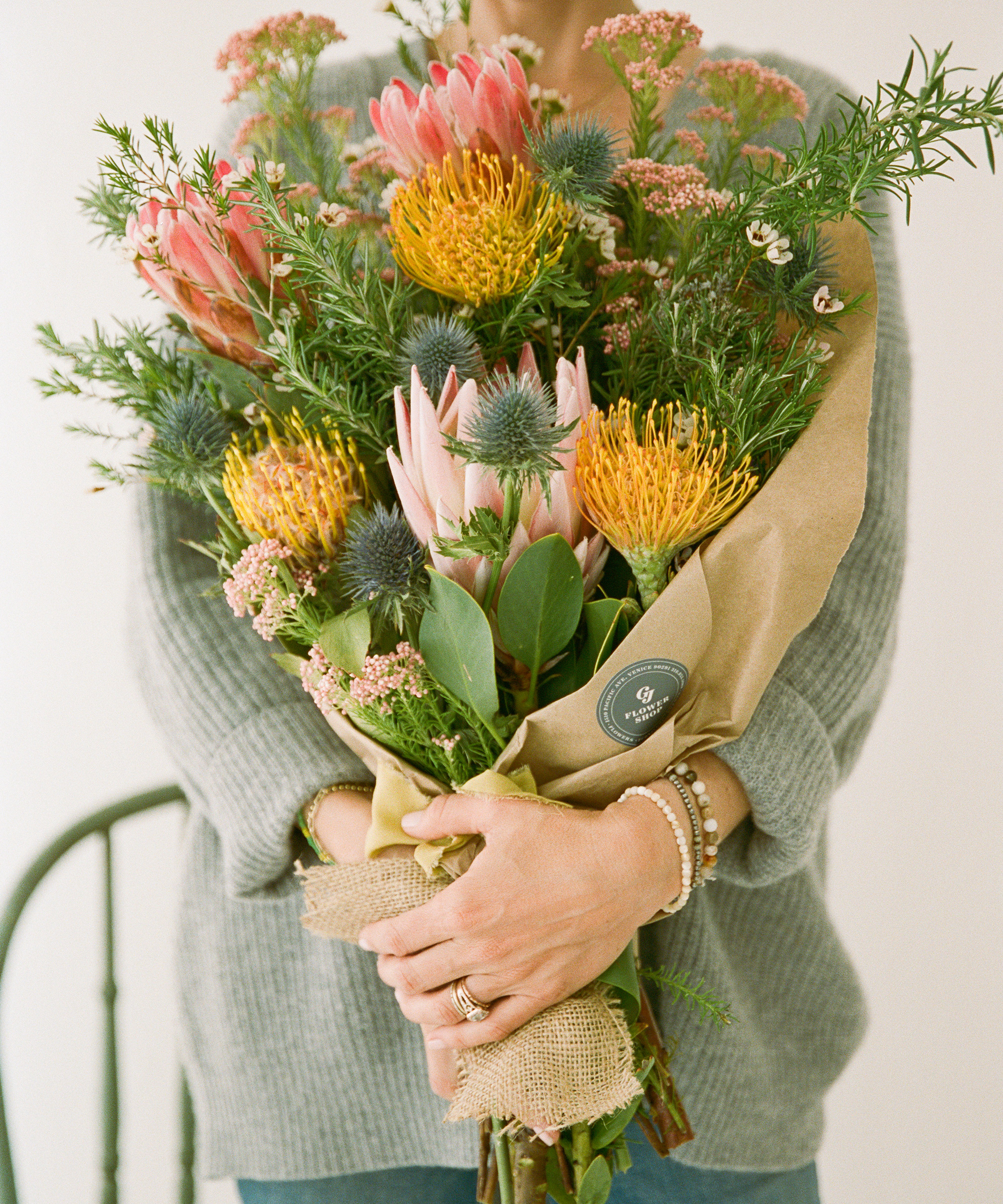
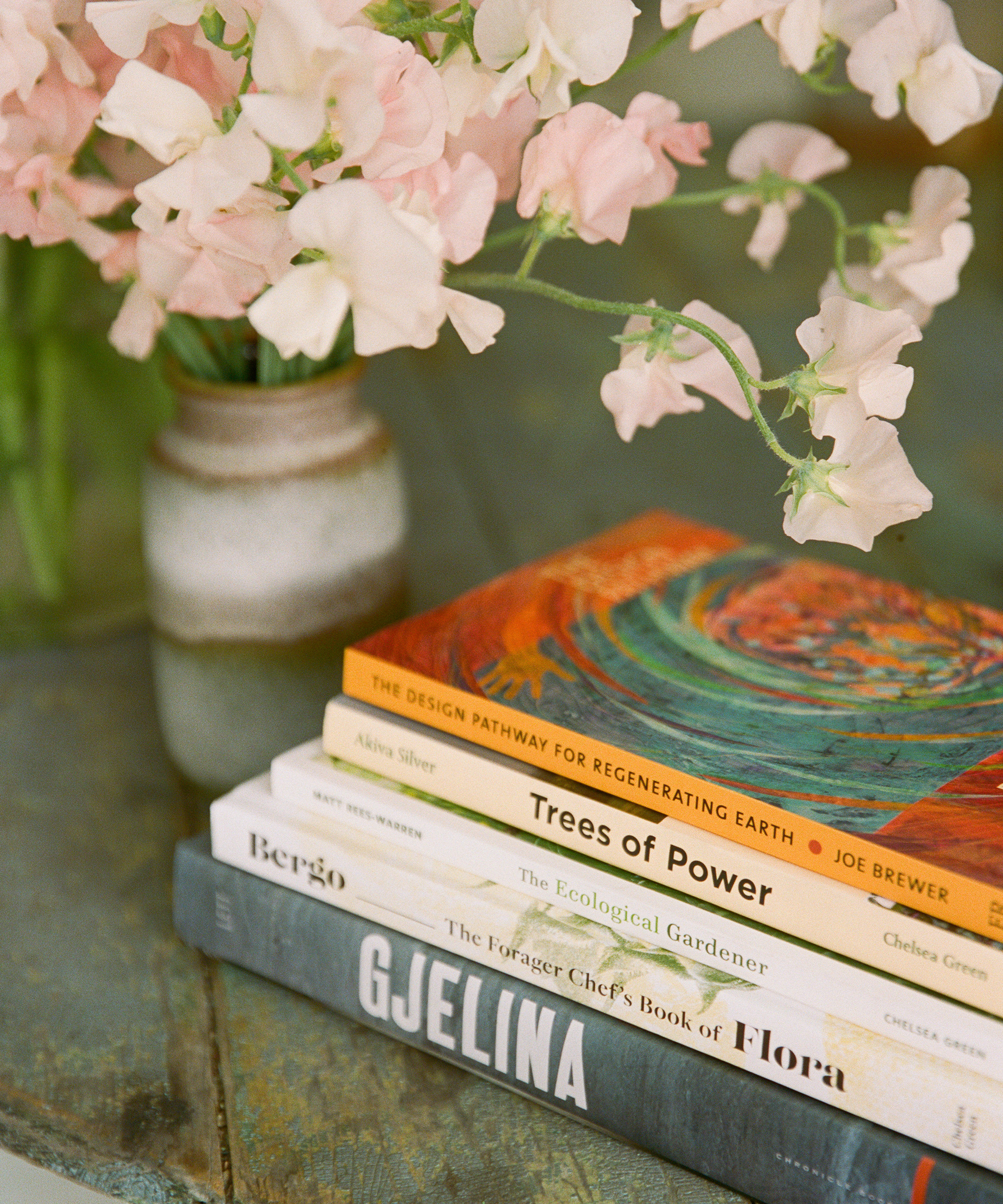
Photos by Nicki Sebastian
